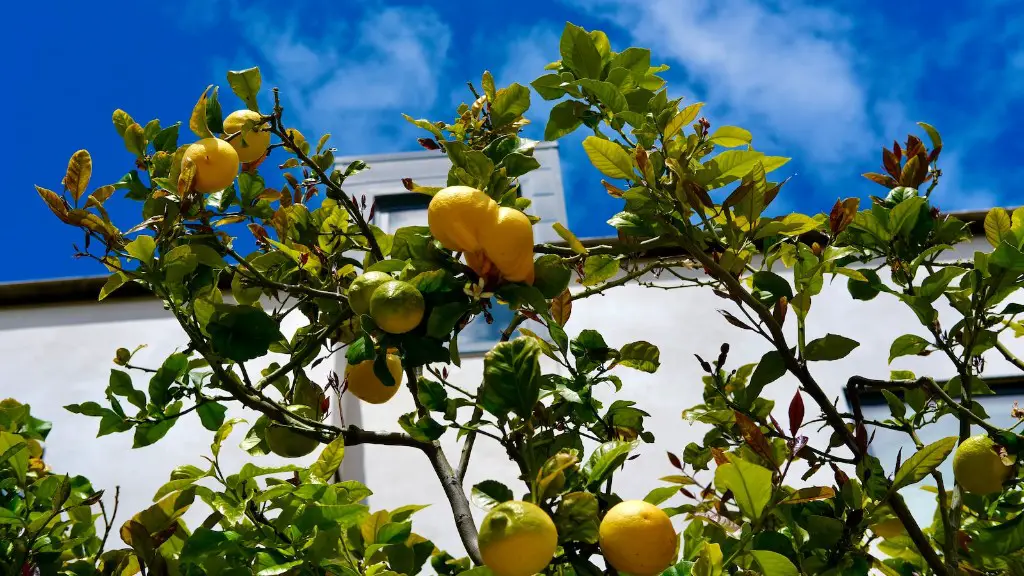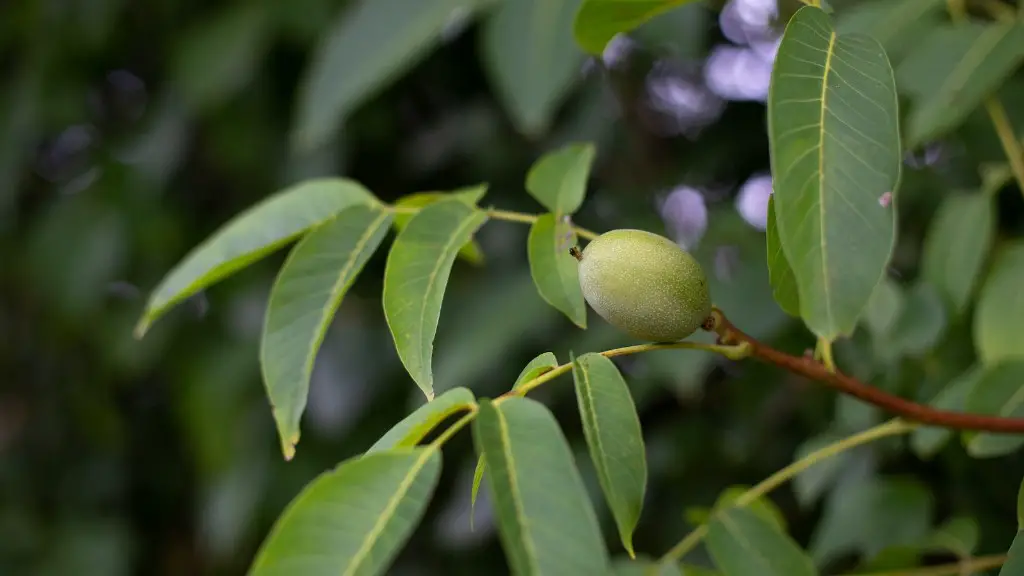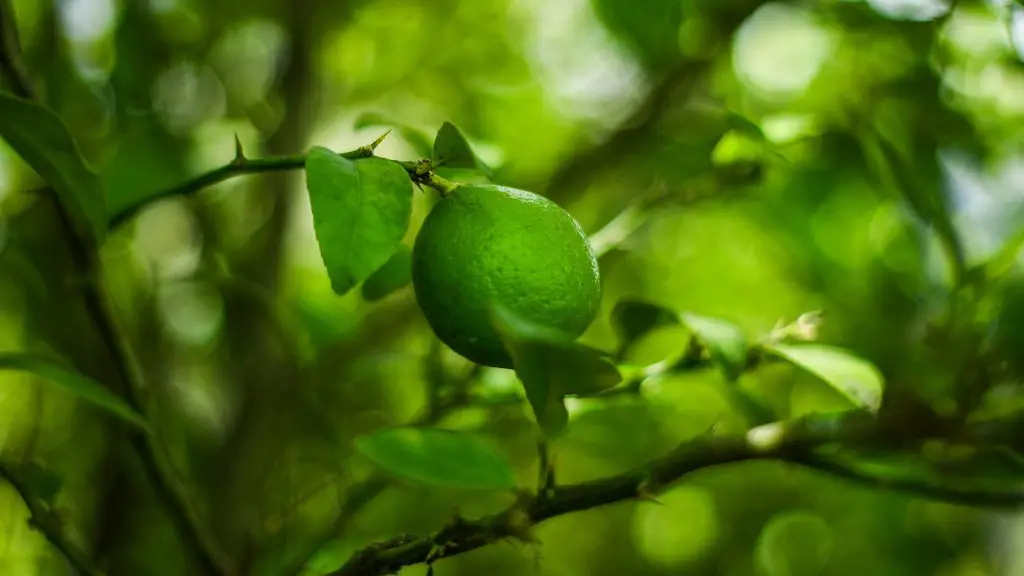When planting a lemon tree, knowing what size pot to use is important. Contrarily to popular belief, lemon trees do not need to be planted in large containers. With proper care, a lemon tree will do just fine when planted in a smaller pot. But there’s still the question of what size?
The size of pot that you need for your lemon tree will depend on the size of the tree. For a younger tree, a 4 gallon pot can always be used. This is large enough for the lemon tree’s root to spread out in, without the chance of it being crowded. As your lemon tree grows, you can switch to a larger pot. But you don’t want to go overboard with the size of your pot. A pot too large will take too long to dry out, and can cause root rot in your tree.
When transferring your lemon tree to a larger pot, be sure to fill in the rootball with fresh soil, if necessary. Make sure that the soil you use is potting soil that contains both organic material and fine gravel. This will help with drainage and will keep your lemon tree perfectly conditioned.
Some people believe that a porous pot is beneficial for planting lemon trees, but this is actually not the case. Much like you would use a potting soil specifically designed for lemon trees, you should also opt for a ceramic or clay pot. This type of pot will actually be better at retaining water, as well as helping to keep the tree’s roots cool.
The best way to know what size pot you should use for your lemon tree is to test it. Fill a pot of the size that you are considering with a potting soil that you previously prepared, and then place the lemon tree in it. Check it after a few weeks to see how its roots have spread, and whether it needs to be transferred to a larger pot or not. Remember to always add fresh soil in the root area when transplanting the lemon tree to a larger container.
The Benefits of a Smaller Pot
For lemon trees, having a pot that is on the smaller side has several benefits. It is easier to move around so that you can easily change its placement when needed to get better exposure to sunlight or other conditions it may need. Moreover, it won’t require so much soil when transferring to a larger pot, which benefits the tree in the long run.
Also, when it comes to water, a smaller pot will need much less than a large one. This means that the soil won’t be soaked in water and there won’t be a risk of root rot. The smaller the pot is, the easier it is for the soil to dry up and for the roots to benefit from the air.
A smaller pot also helps keep the contents from drying up too quickly. This can help your lemon tree in various ways, as the soil needs to remain moist and the lemon tree needs to remain hydrated.
Finally, a smaller pot helps create better drainage. As the tree is planted in a smaller container, the space between the soil and the container is larger, which allows the excess water to drain more easily, preventing the soil from becoming soggy.
Conclusion
When it comes to picking the right size pot for a lemon tree, it’s important to consider the size of the tree. A smaller pot will be sufficient for a young tree, but a larger one may be needed for a larger tree. Also, make sure the soil you use is specifically made for lemon trees, and opt for a ceramic or clay pot for better water retention. Finally, test the pot out to see how the roots spread and if you need to transfer the lemon tree to a larger pot.
Amount of Sunlight to A Lemon Tree
In order for a lemon tree to remain healthy, it needs a lot of sunlight. There should be no shortage of bright and direct sunlight, as this helps the tree grow properly, as well as flowering and fruiting properly. Depending on the climate, lemon trees can benefit from six to eight hours of direct sunlight per day.
Also, it is important to keep the lemon tree out of the wind, as strong winds can damage or stress out the tree. It is best to place them in sheltered areas such as against a wall or fence, where it can receive all the sunlight it needs, without the added stresses of wind.
The temperature is also an important element to consider when it comes to lemon tree care. During the day, the lemon tree should stay in a warm, sunny place. However, temperatures that fall below fifty degrees Fahrenheit should be avoided for lemon trees, as cool temperatures fend to cause the lemon tree to shed its leaves, which could affect its growth.
Finally, when it is time to repot a lemon tree, it is important to choose the right type of container. A shallow or deep container will be sufficient, as long as there is enough airspace around the root system. Moreover, choose a container that will have an adequate drainage capacity to help keep the lemon tree healthy.
Other Essential Elements to Keep in Mind
It is important to water your lemon tree often, and make sure that the soil remains moist, but not waterlogged. You should water your lemon tree in the morning and evening, and prevent water from coming in contact with the leaves. When it comes to fertilizing, you should do this during the tree’s active growing season, which is from April to mid-June, and from late August until mid-October.
Lemon trees also need to be pruned in order to stay healthy, as it helps the tree stay shaped. Pruning also allows for new shoots and branches, which encourages fruit production of the lemon tree. To do this, you should remove any branches that are dead and unproductive, as well as those that cross over each other.
Finally, it is important to watch out for any signs of pests. There are many different types of pests that can affect a lemon tree, such as aphids, scale, and spider mites. To prevent this, use insecticidal soap or neem oil, and remove any fallen fruit in order to get rid of any possible pest infestation.
Monitoring Your Lemon Tree’s Health
When taking care of a lemon tree, it is important to monitor the health of the tree. Some signs that indicate that there might be something wrong with your lemon tree are yellowing leaves and lackluster foliage. Also, abnormal growth patterns and wilting are important signs to look out for.
Furthermore, if your lemon tree feels dry to the touch, this could mean that you are not watering it enough. Also, if the leaves are yellowing, this could be a sign that you are overwatering your tree. In this case, you should adjust your watering humidity to make sure the soil is not overly saturated.
If your lemon tree is not fruiting, this could be because of inadequate sunlight or nutrient deficiency. To ensure that the tree is receiving enough sunlight, you should make sure that it is placed in an area with plenty of direct sunlight. Also, if the soil is lacking in nutrition, you should add a fertilizer to help the tree in its growth.
Finally, to help monitor your lemon tree’s health, you should inspect the tree regularly. Focus on the roots, as well as the leaves and branches, and make sure to check for any pests that may be infesting the tree.





